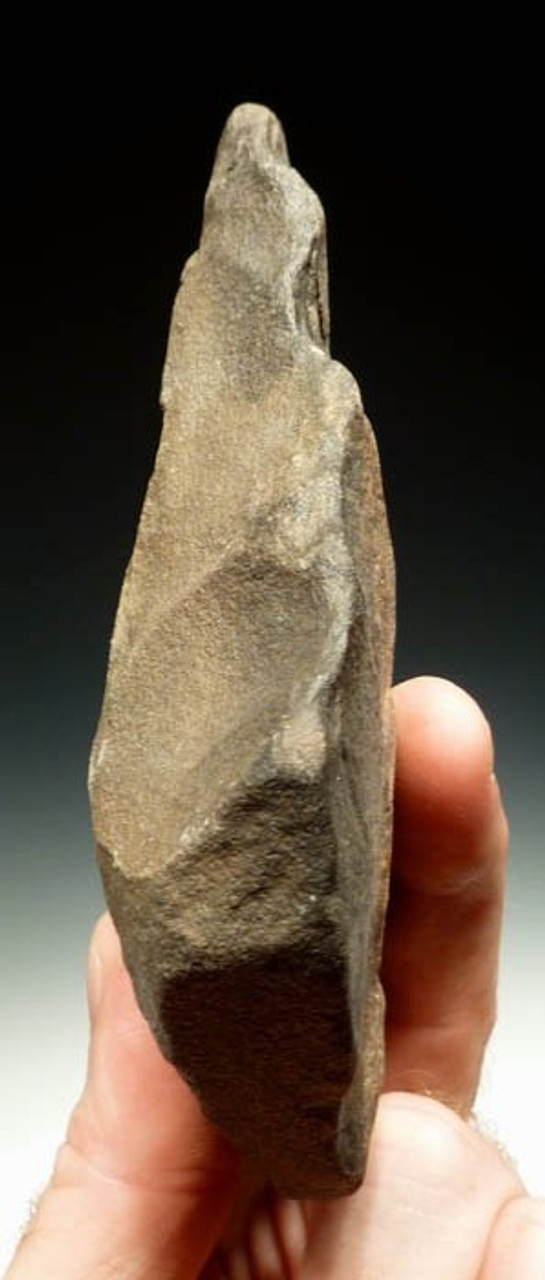Product Description
SEE MORE STONE AGE ACHEULIAN TOOLS BY EARLY MAN
This is a MUSEUM-GRADE example of an uncommon Acheulean hand axe form known as a BROAD TRIANGULAR hand axe. This is the first of its kind we have offered for sale and these are not as common as the more elongate varieties. Such a wide and flat proximal end coupled with a sharp tip makes this axe a likely tool of choice to puncture large bones of hunted prey to get to the cherished marrow inside. During the time of this axe, there were large elephant species and giraffe species in Africa that primitive humans would have hunted. An axe like this was necessary to butcher such large kills. This example shows the most superb flaking and execution of this form. It fits PERFECTLY in the RIGHT hand with a bulbous grip for the trailing fingers likely needed to get a firm grip as this axe would have been slippery with blood and fat when in use. As an added bonus, the bi-color patina is as good as it gets! The surface shows a "desert varnish" - a natural glossy surface caused by the exposure of the stone to the blowing sands over hundreds of thousands of years. The two-tone patina on either side is a testament to its age and authenticity from laying untouched and exposed on one side for hundreds of millennia. Tip and edges are intact. Tip is not broken from recent damage or mishandling and is in perfect original form.
This quartzite hand axe was made and used by early humans of the primitive species Homo erectus (ergaster). It was surface-collected from an exposed Acheulian site in the Sahara Desert of North Africa. This Lower Paleolithic tool represents the first intelligent design type known to science that was made by primitive humans. Prior to these Saharan Acheulian handaxes, only crude pebble and flake tools existed in the human fossil record.
 US DOLLAR
US DOLLAR
 EURO
EURO
 AUSTRALIAN DOLLAR
AUSTRALIAN DOLLAR
 CANADIAN DOLLAR
CANADIAN DOLLAR
 POUND STERLING
POUND STERLING


















